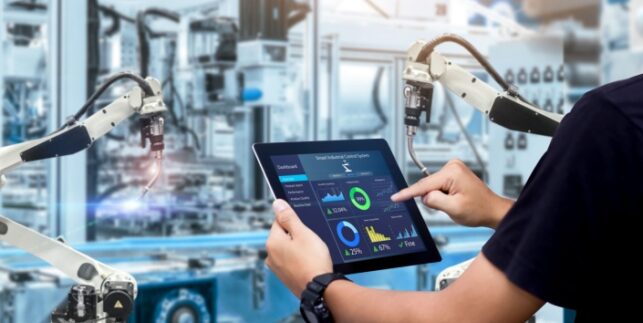Consumers Are Now Driving Change in Consumer Goods Manufacturing

Consumer goods manufacturers are subject to many driving factors that guide trends in the industry. Ultimately, these trends require new approaches on the shop floor to meet shifting demands. Manufacturers must be prepared to adapt as these factors continue to change.
Consumers, the end users of these products, are a bigger part of this process than ever before. The world surrounding manufacturers has changed, and new technologies and trends mean that they must now pay closer attention to consumers when making key decisions.
Why Consumers Have More Influence Than Ever Before
As the end users of consumer goods, end users have always had significant influence over the decisions that manufacturers make. Whether or not consumers purchase goods and the price they’re willing to pay makes or breaks a company.
However, this connection has traditionally been obscured by multiple intermediate layers. There was little to no direct connection between what happened on the shop floor and consumers. Their interactions with products were through marketing efforts and store shelves.
Today, increased connectivity gives consumers greater awareness of what happens at every step of a product’s lifecycle. Traditionally, consumers weren’t aware of what happened behind the scenes. While manufacturers still had to meet regulations concerning sustainability, safety, and other areas, they didn’t necessarily have to face the court of public opinion.
Information now travels more freely, making it possible for consumers to find out more about manufacturing supply chains. Instead of simply relying on a government stamp of approval, they can now find details about the specific consumption and waste management practices of manufacturers.
If they aren’t happy with what they find, they can quickly spread the word and damage the company’s reputation. This means that manufacturers must now focus directly on consumer demands rather than having those demands enforced by the proxy of regulation. Such demands are often much stricter and can shift much faster than any regulatory process.
Now, manufacturers must both increase their capabilities to meet those demands and their agility to respond to shifts in demand. Today, consumer focus requires such capabilities in several key areas for manufacturers.
Consumers Demand Sustainable Manufacturing
Sustainable manufacturing is one of the most important areas that manufacturers must address today. They face pressure from all sides, with regulators, industry partners, and consumers all pushing for more sustainable products.
In the past, sustainable manufacturing was focused on avoiding serious air or water pollution. While these are still vital aspects of sustainability today, consumers expect manufacturers to go further. Instead, manufacturers are now expected to find opportunities for improvement at every stage of their processes.
The increased use of post-consumer recycled content and other eco-friendly materials are some of the most prominent consumer demands. Manufacturers have to change recipes and production methods for both products and packaging to meet those demands.
Greenhouse gas emissions are another primary focus for consumers. For many manufacturers, the most effective realization of reduced emissions is achieved by reducing energy consumption. Consumers expect manufacturers to reduce their impact, whether through a direct reduction in consumption or through the use of renewable energies.
Consumers are more likely to choose products they view as sustainable and avoid those that they don’t. Putting effective sustainable manufacturing measures into place on the shop floor lets manufacturers meet those expectations and ensure the continued appeal and success of their products.
Consumers Demand Transparency
Social media and other types of global connectivity have created a landscape where knowledge is easily accessible to all. Within that landscape, consumers have certain expectations for the information provided by manufacturers concerning their operations and supply chains.
It isn’t enough for modern manufacturers to make beneficial changes on the shop floor. They also need to be able to demonstrate those changes and their impact. Consumers demand tangible information regarding sustainability and other areas, so manufacturers need a way to collect and manage that information.
This information is necessary not just to establish that a manufacturer meets current consumer standards but also to show improvement over time. Even if a manufacturer shows solid performance overall, consumers are drawn to companies that make a continuous effort and achieve progressive results.
Achieving transparency doesn’t just mean monitoring consumption on the shop floor but also in terms of the complete lifecycle of any product. Much of any given product’s total environmental impact is in the form of material emissions associated with the production of raw materials. Manufacturers need to be able to account for these emissions with accurate records of actual raw material consumption.
Being able to provide an accurate accounting of production lets manufacturers make validatable claims toward consumers. Transparency concerning these claims lets consumers feel more assured about the impact that a manufacturer really delivers.
Meeting Consumer Demands on the Shop Floor
Manufacturers require access to new solutions as consumer demands continue to develop greater leverage over their operations. The rate at which consumer demands can shift requires a new approach with more focus on agility.
Improving data aggregation and analysis can help improve agility on the shop floor. Real-time monitoring lets manufacturers maintain tighter control over processes as they undergo modifications to meet consumer demands. The ongoing collection and analysis of that data further allow optimization.
In terms of sustainability, recipe management is a central point of focus for many industries. Being able to easily manage and modify recipes on the shop floor lets manufacturers adjust to increased recycled or other eco-friendly material use. Real-time monitoring of raw material consumption ensures that those recipes are implemented properly, and that waste is kept to a minimum.
Working with new materials, particularly recycled feedstocks, often poses quality problems as well. Establishing the right KPIs and thresholds and implementing real-time monitoring with automated alerts and workflows lets manufacturers keep a tight hold on quality in adapted processes.
Transparency also benefits from real-time data aggregation and analysis. Ensuring that all production data is captured and validatable prepares manufacturers to provide accurate information regarding their efforts.
Manufacturers require a solution that provides them with improved tools for aggregation, analysis, and action on the shop floor in order to maintain agility in the face of consumer demand.
Develop an Agile Shop Floor With Matics
Matics Real-time Operational Intelligence (RtOI) is a solution that enables manufacturers to develop agile shop floors capable of meeting consumer demands. Manufacturers can become more sustainable with tools for managing and monitoring material and energy consumption. Robust data aggregation and analysis provide the foundation needed for complete supply chain transparency.
With real-time monitoring, production and KPI visualization, and work management tools, Matics RtOI provides exceptional visibility and control over your shop floor. Book your demo today to see how Matics can provide seamless integration of our solution for your operations.





